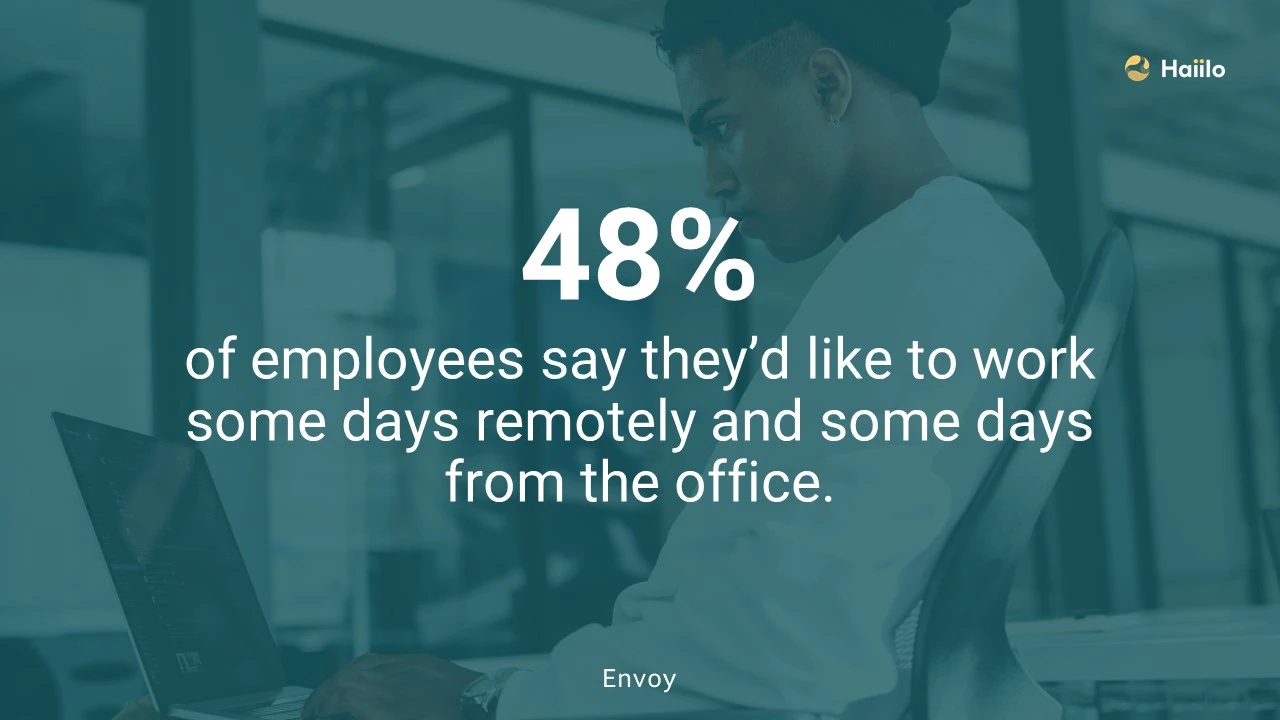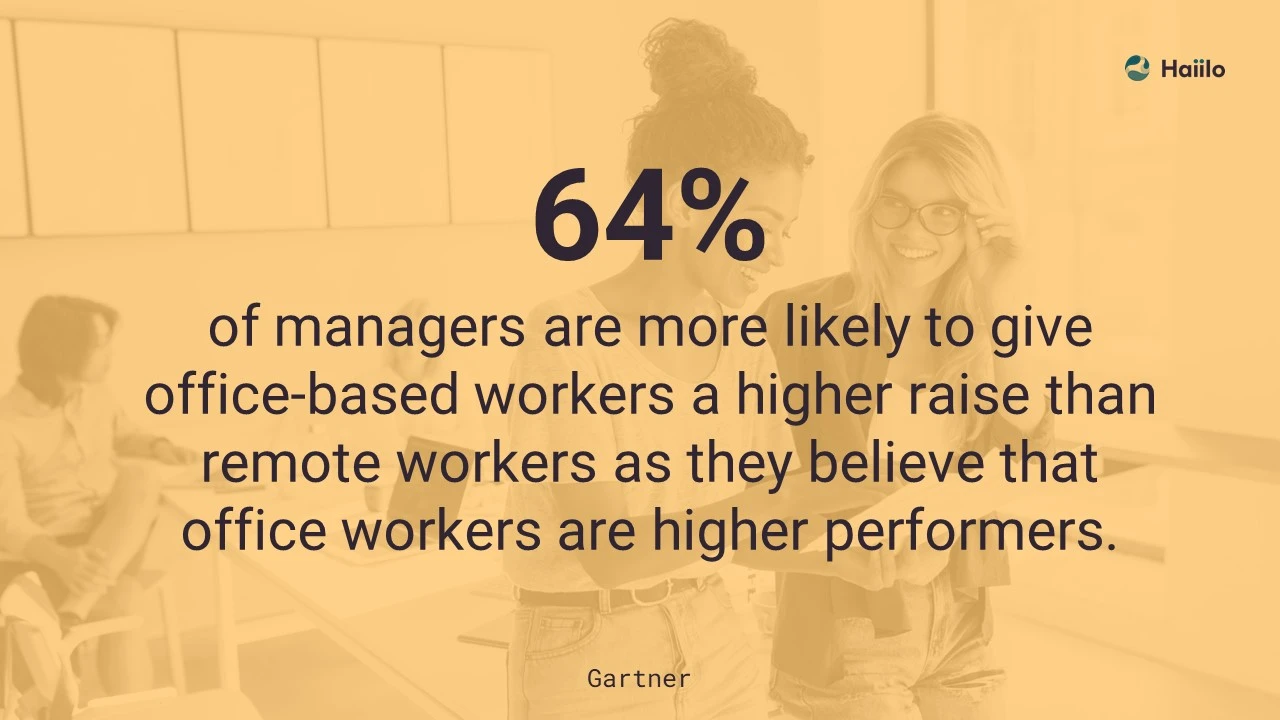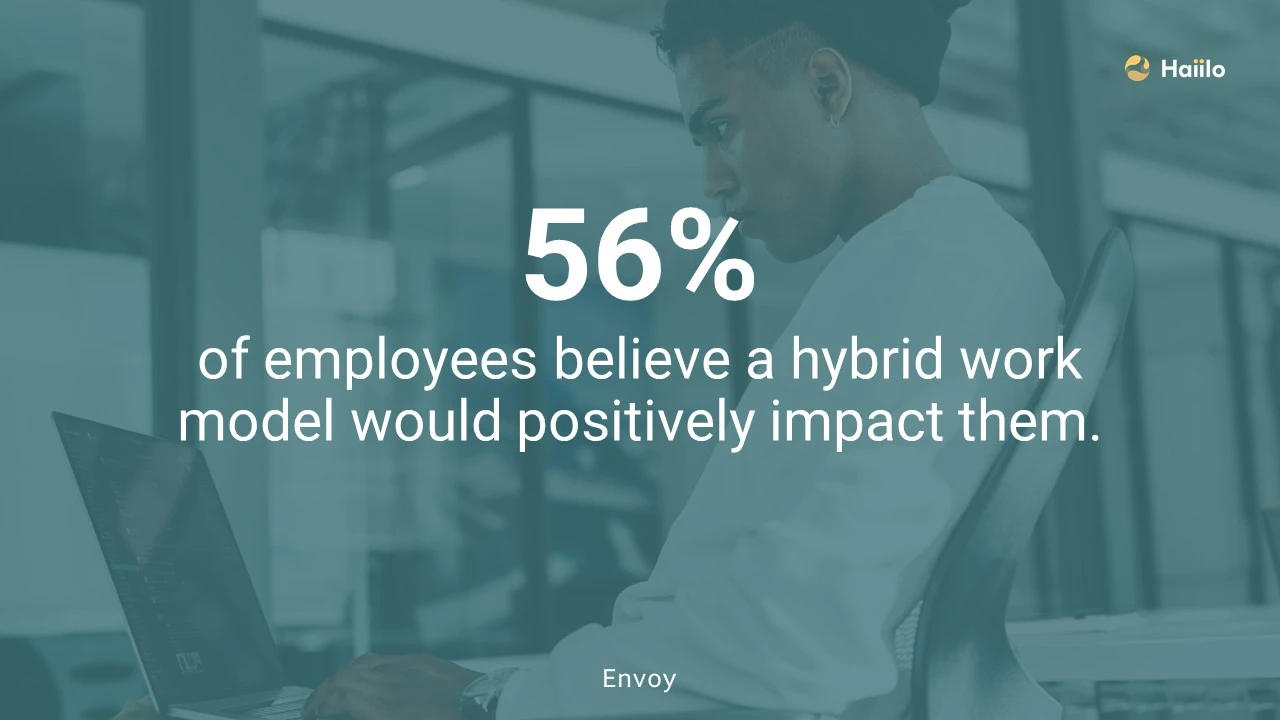Hybrid work is a trend organizations across the world are adopting since the emergence of COVID-19 and remote work. Many companies now understand the benefits of flexible work conditions for various stakeholders.
In this blog, we will explain what hybrid work really is, how to ensure a smooth transition to hybrid work, and what are the benefits of this working model.
💡 Because employee communications are crucial for ensuring successful hybrid work, download our guide Building a Better Company with Internal Communications.
Get an IC platform that will allow your employees to stay connected and informed in the times of hybrid work
What is Hybrid Work?
Simply said, hybrid work is a model that organizations use to allow flexible working conditions for their employees — allowing employees to work from wherever, on their own schedule. Since last year, many organizations were forced to implement remote work, and most of them have realized that this way of working is preferred by many employees.
To support their employees’ preferences, many employers will keep remote work options in the workplace.
According to research, nearly half of respondents (48%) say they’d like to work some days remotely and some days from the office.

Because remote work is here to stay, hybrid work is as well!
However, hybrid ways of working do have some downsides, which is why organizations need to follow certain best practices to manage their hybrid workforce.
Let’s dig deeper into what employers can do to successfully manage hybrid work in their organizations.
💡 Also read: 12 Talent Management Tips for Navigating Turbulent Times.
How to Successfully Manage Hybrid Work
Data from a recent WeWork and Workplace Intelligence survey suggests that 75% of employees are willing to give up at least one benefit or perk for the freedom to choose their work environment, while 64% would pay up to $300 for access to an office space.
Even though hybrid work is appreciated by many employees and can significantly improve workplace culture, it has its complexities and downsides. Because hybrid work usually means the combination of in-office and remote employees, employers need to find the best way to manage both ways of working.

Follow these steps to enable your hybrid employees to succeed.
1. Understand your employees’ needs and preferences
To mitigate the negative sides of remote work, it is important to understand its impact on employees’ engagement and productivity. As employee collaboration is one of the most common downsides of remote work, it is crucial to understand the consequences of employees being physically separated.
According to the previously mentioned research, employees decide where to work based on what they need to get done for work (39%) and who else plans to be at the workplace that day (37%).
Understanding employees’ preferences and their nature of work is, therefore, crucial for setting up a successful hybrid work strategy.
2. Set and communicate clear goals and expectations
Achieving good organizational alignment has never been easy, and today it is more important than ever before. Hybrid work makes organizational alignment even harder, which is why clear communication around an organization’s strategy, goals, mission, and vision is crucial.
Unfortunately, only 61% of workers say they receive the right amount of information about what is happening in their organization.

Distributed workforce needs to have a clear understanding of their common goals. When employees and groups have a good understanding of what is expected from them, their work location should never stop them from achieving their objectives.
3. Make employee communications your priority
Proper employee communication is an absolute prerequisite for successful hybrid work. Many employers are still struggling to bring their communication efforts to the next level, but most of them have made workplace communication their number one priority.
Based on research:
- The #1 expectation from employees is that their employers communicate effectively, but
- Only 42% of employees say their company does a good job of communicating overall.
Lack of proper employee communication technology is often the biggest blockers in improving remote communication in the workplace. In contrast, best employee communication apps are designed to enable employers to mitigate the downsides of remote work by making information more relevant and easily accessible to every employee.
4. Frequently ask for feedback
Hybrid work requires better employee listening efforts. Your employees’ feedback is crucial for understanding the impact of hybrid work on employees’ wellbeing, motivation, engagement, collaboration, and productivity.
This is why organizations across the world are implementing regular employee surveys. While they used to do only annual employee engagement surveys, some of them are now collecting daily feedback from their workers.
However, many employers are struggling to get feedback from their employees, especially those who are hard to reach such as deskless and frontline workers. Using the right technology that enables you to reach the right employee, with the right content, at the right time is crucial for collecting valuable feedback from your employees.
5. Give guidance
You employees should never be guessing if and when they should show up in the office.
Although the hybrid work model ideally sits in the middle of remote-first and office-first, it can easily get pulled in either direction without clear guidelines.
For that reason, it’s important to establish new rules, procedures, and best hybrid work practices. For example, if collaboration and in-person meetings are important for some of your teams, you may want to define two days in a week when these teammates must get together in the office.
💡 As guidance often needs to come directly from leaders, learn more about the most important leadership skills!
6. Don’t discriminate
Recently, Dropbox raised an issue that many people have neglected with the hybrid model — promotions and benefits might not be awarded equally. As Dropbox’s statement said,
“Hybrid approaches may also perpetuate two different employee experiences that could result in barriers to inclusion and inequities with respect to performance or career trajectory.”
Research on this topic also supports the idea that office workers are more likely to be promoted. According to a survey by Gartner, 64% of managers are more likely to give office-based workers a higher raise than remote workers as they believe that office workers are higher performers.

Organizations should invest in training managers to identify biases against remote workers during performance reviews.
💡 Also learn about the best ways for managers to communicate with their employees!
7. Introduce new benefits for remote employees
Because of the emergence of hybrid work, employers need to rethink the perks and benefits they offer to employees. While car allowance and travel expenses used to be a good perk, today this benefit doesn’t apply to many employees.
Instead, employers are looking for more relevant perks for their remote workers. For example, some employers offer compensation for internet and electricity expenses, some offer home office supplies such as standing desks, some pay for coworking spaces, and some even offer mental health services.
8. Assess and update your organization’s tech stack
If you are looking to implement the hybrid work model in your organization, you first need to make sure that your organization’s tech stack can support it. Since the emergence of the pandemic, many software providers have been adjusting their technologies to support remote work.
Luckily, modern employee apps, employee engagement software, and employee communication tools enable employers to adjust to the new ways of working, keep their employees informed, safe, and productive.
Another important benefit of this technology is its ability to connect various tools into a single platform. Today, the technology ecosystem in organizations is becoming extremely complex, and integrating technology is on every organization’s to-do list.
The Benefits of Hybrid Work
Even though hybrid work has its downsides, there is a lot of research that proves the power of flexibility in motivating employees, making them more engaged and productive, and keeping employees longer in their organizations.
Here are the biggest benefits of hybrid work models.
Better employee experience and wellbeing
According to research, a majority (66%) of employees say they are worried about their health and safety when it comes to returning to the workplace, and more than half (56%) of employees believe a hybrid work model would positively impact them.

The hybrid work model inevitably offers much more flexibility which positively impacts employees’ wellbeing, safety, and work-life balance.
💡 Also learn about the importance of workplace safety and how to keep employees safe!
Increased employee engagement and productivity
Happier employees with better working experience are also more engaged employees. According to a Gallup survey, employees who worked remotely at least some of the time both pre-pandemic and during the pandemic had the highest engagement levels.
Many professionals and well-known leaders across the world agree on the fact that hybrid work isn’t just a temporary fix to accommodate pandemic health guidelines, but a part of lasting changes to how we work.

Easier talent attraction and better retention
Previously mentioned research showed that 41% of workers would be willing to take a job with a lower salary if the company offered a hybrid work model. While full flexibility used to be a rare talent attraction magnet, it is now becoming a prerequisite for many employees.
Similarly, employees who appreciate flexibility will stay longer with organizations that offer hybrid working models.
Staying flexible allows employees to create a greater balance and autonomy during their week. Employees can spend time with their kids, eliminate the hassle of taking PTO for doctor appointments, and save time and money on commuting.
Successful Hybrid Work Starts with Proper Communication
As mentioned earlier, proper communication in the workplace is a prerequisite for successful hybrid work. When employees rarely see each other, and when managers are limited to hold in-person meetings with their teams, digital communication channels become crucial.
Haiilo is employee communication, engagement and advocacy software used by companies that have implemented hybrid work in their organizations.
With Haiilo, employers can:
- Easily send employee surveys to targeted employee groups
- Open the line to two-way communication and encourage employees’ share of voice
- Instantly reach every employee no matter their job function and location
- Perform robust audience segmentation to make information more relevant and personalized
- Send push notifications to catch employees attention during emergencies
- Measure employees’ engagement with communication campaigns and track the ROI of proper communication in the workplace










